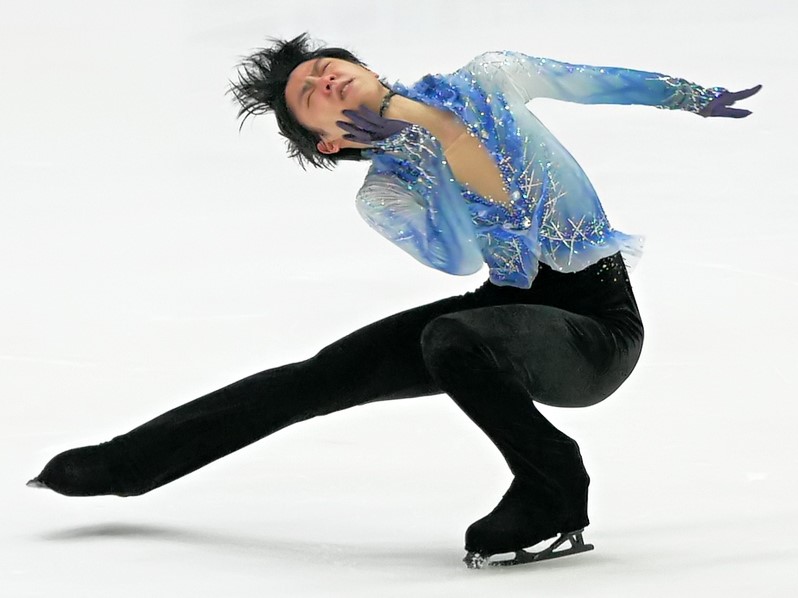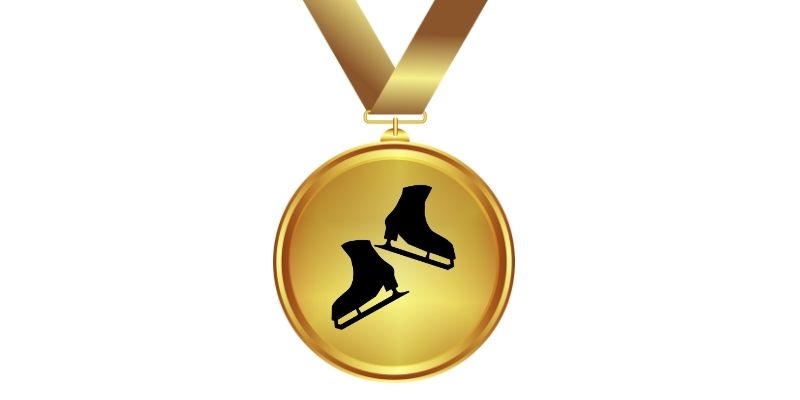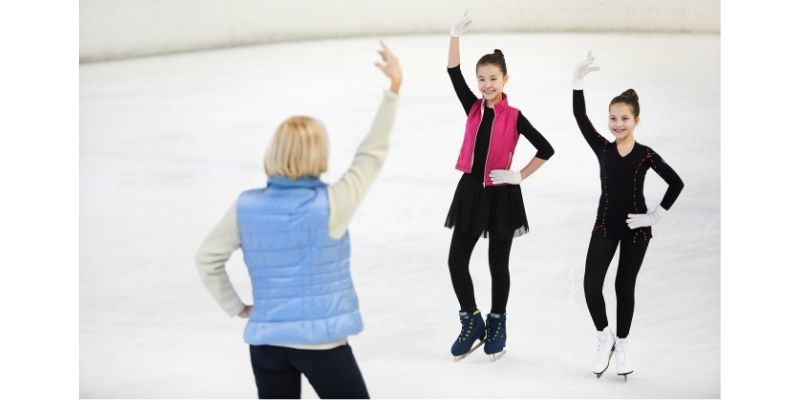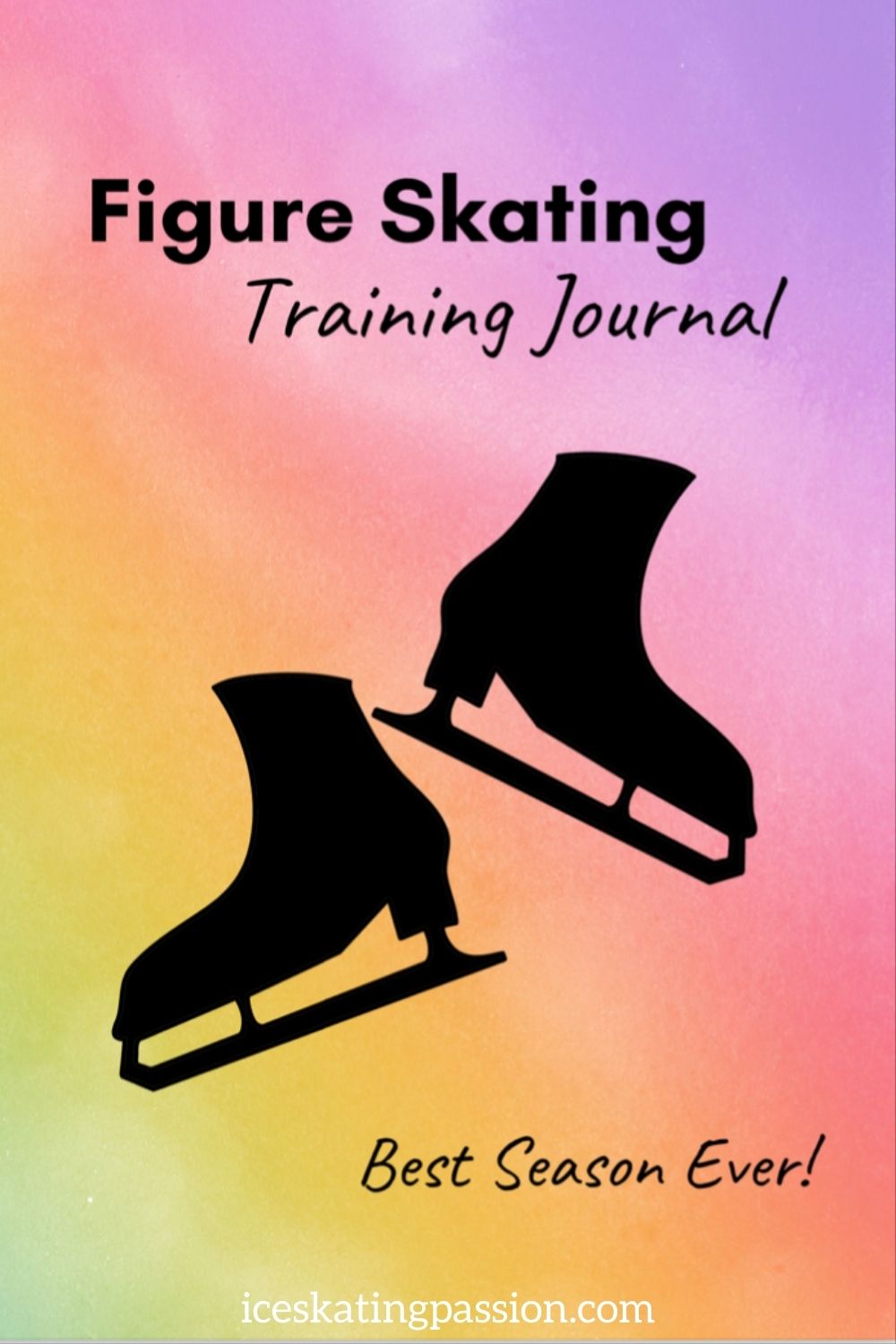Since its introduction in 1924, figure skating has been one of the most popular sports at the Winter Olympics.
It has developed into a 5 event competition series including singles and pair figure skating, as well as ice dancing.
Below, you will learn more about each of the events and their famous skaters.
This article contains affiliate links. If you purchase using my link, I get a commission at no extra cost to you (learn more).
The 5 Figure Skating Olympic Events - Introduction + FAQs
Brief history
The first figure skating competition at the Olympics first took place at the 1908 London Summer Games.
Then it was included again at the 1920 Antwerp Games.
It is only in 1924, for the Chamonix Games, that Figure Skating was permanently included in the Winter Olympic Games program.
What are the figure skating events at the Olympics?
Figure skating now includes 4 events:
- Men's Individual
- Women's individual
- Pairs
- Ice dancing
- Team
Normally, there is also a gala with the best ranked skaters and local skaters once the competition is over.
Note that those are the figure skating events. There are other skating events under the speed skating competion.

2010 Gala - photo by David W. Carmichael - davecskatingphoto.com, CC BY-SA 3.0, via Wikimedia Commons
How many skaters can compete at the Winter Olympics for figure skating events?
Rules can change from games to games.
At the 2022 Beijing Olympics the quota spots were 144 with:
- Men's Individual - 30 skaters
- Women's individual - 30 skaters
- Pairs - 19 pairs
- Ice dancing - 23 pairs
- Team - from the roasters of the other events, 10 teams maximum
Once country can enter a maximum of 9 men and 9 women.
How do figure skaters qualify for the Olympics?
Rules can change from games to games.
At the 2022 Beijing Olympics, the rules were:
Every discipline qualifies independently.
Qualification of the country:
- Countries can earn up to 3 spots per events.
- 1st option - Most spots are allocated based on the results of the 2021 World Championships.
- 2nd option - Next best ranked athlete from the NFs not qualified with two or three places until the quotas of qualification through are reached.
- Learn more on Wikipedia
Skater qualification:
There is no individual athlete qualification.
The choice of which athlete(s) to send to the Games is at the discretion of each country.
According to ISU rules, countries must choose skaters who have achieved a minimum technical elements score at an ISU-recognized competition.

Photo by David W. Carmichael - davecskatingphoto.com, CC BY-SA 3.0, via Wikimedia Commons
AIs synchronized skating an Olympic event?
Today, synchronized skating has been reviewed for Olympic eligibility, but it is not an Olympic sport.
Although it is growing very fast, synchro may never be part of the Olympics because:
- The teams are huge - 20 skaters each which means high accommodation costs
- It is difficult to televise: you don't realize the speed and difficulty via a screen
- It is not popular is many parts of the World which limits the potential audience
- There are not enough countries with teams when the Olympics is a contest between all nations around the world - at senior level, only around 20 countries have teams today
Figure skating nations are working on new models to be able to include synchronized skating at the Olympics.
Dominant nations in ice skating events at the Olympics
The most successful nations in terms of medals throughout the Figure skating Olympics history are:
- USA - 53 medals including 16 gold
- Russia - 60 medals including 30 gold (competing under Russian Empire, Soviet Union, Unified Team, Russian Federation, Olympic Athletes from Russia, & Russian Olympic Committee)
Dominant skaters
The most decorated skaters in the Olympics history of Figure skating are:
- Tessa Virtue and Scott Moir, ice dancers from Canada - they have a total a total of five medals including two golds in ice dance and one team event gold (2010 to 2018).
- Gillis Grafstrom, a male figure skater from Sweden has had 4 medals including 3 gold ones (1920 to 1932)
- Sonja Henie, a female figure skater from Norway, has earned 3 gold medals (1928 -1936)
- Irina Rodnina, a pair figure skater from Soviet Union, has earned 3 gold medals (1972 -1980)
- See more on Wikipedia

Virtue and Moir - photo by David W. Carmichael - davecskatingphoto.com., CC BY-SA 3.0, via Wikimedia Commons
Rules
Is there an age limit for figure skaters at the Olympics?
The minimum age to compete as a figure skater in the Olympics is 15 years old.
The athlete must turn 15 by July 1, the year before the Olympic Games.
Women's Singles Figure Skating event
History and description
Women's individual has been an Olympics skating event from the beginning.
In this event, individual women complete 2 programs:
- Short program - 2 minutes 30 seconds
- Free program - 4 minutes
What to look for
Both programs have requirements to be included in the program and set to music:
- Jumps
- Spins (including a spin combination)
- Attitudes
- Step sequences

Yuna Kim - photo by David W. Carmichael - davecskatingphoto.com, CC BY-SA 3.0, via Wikimedia Commons
Dominant countries
- USA - 23 medals, including 7 gold
- Russia - 8 (competing under Russian Empire, Soviet Union, Unified Team, Russian Federation, Olympic Athletes from Russia, & Russian Olympic Committee)
- East Germany - 5 medals including 3 gold
- Norway - 3 gold medals
- Austria 7 medals including 2 gold
- UK - 6 medal including 2 gold
- Canada - 6 medals including 2 gold
Great champions
- Sonja Henie from Norway - 3 medals, including 3 gold (from 1928 to 1936)
- Katarina Witt from Germany - 2 medals, including 2 gold (from 1984 to 1988)
- Tenley Albright from the USA - 2 medals, including 1 gold (from 1952 to 1956)
- Carol Heiss from the USA - 2 medals, including 1 gold (from 1956 to 1960)
- Sjoukje Dijkstra from the Netherlands - 2 medals, including 1 gold (from 1960 to 1964)
- Yuna Kim from South Korea - 2 medals, including 1 gold (from 2010 to 2014)
Men's Singles Figure Skating Event
History and Description
Men's individual has been an Olympics skating event from the beginning.
In this event, individual men complete 2 programs:
- Short program - 2 minutes 30 seconds
- Free program - 4 minutes 30 seconds
Note that at the first Winter Olympics, there was another men event called special figure. It only took place once.
What to look for
Both programs have requirements to be included in the program and set to music:
- Jumps
- Spins (including a spin combination)
- Attitudes
- Step sequences

Yuzuru Hanyu - photo by Phantom Kabocha, CC BY 4.0, via Wikimedia Commons
Dominant countries
- USA - 16 medals including 8 gold
- Russia - 10 (competing under Russian Empire, Soviet Union, Unified Team, Russian Federation, Olympic Athletes from Russia, & Russian Olympic Committee)
- Sweden - 7 medals including 4 gold
- Austria - 8 medals including 3 gold
- Japan - 6 medals including 2 gold
- UK - 2 medal including 2 gold
- Canada - 9 medals including 0 gold
Great champions
- Gillis Grafström from Sweden - 4 medals including 3 gold (1920 to 1932)
- Karl Schäfer from Austria - 2 medals including 2 gold (1932 to 1936)
- Dick Button from the USA - 2 medals including 2 gold (1948 to 1952)
- Yuzuru Hanyu from Japan - 2 medals including 2 gold (2014 - 2018)
- Evgeni Plushenko from Russia - 3 medals including 1 gold (from 2002 to 2014) (plus team medals)
Pair Figure Skating Event
History and Description
Figure Skating Pairs competition has been an Olympics skating event from the beginning.
In this event, pairs complete 2 programs:
- Short program - 2 minutes 30 seconds
- Free program - 4 minutes
What to look for
Both programs have requirements to be included in the program and set to music:
- Jumps - both side by side and thrown jumps (where the male partner throws the female in the air)
- Spins (side by side and combined)
- Step sequences
- Lifts

Dan and Hao Zhang - photo by David W. Carmichael - davecskatingphoto.com, CC BY-SA 3.0, via Wikimedia Commons
Dominant countries
- Russia - 24 (competing under Russian Empire, Soviet Union, Unified Team, Russian Federation, Olympic Athletes from Russia, & Russian Olympic Committee)
- Germany - 7 medals including 4 gold
- China - 7 medals including 2 gold
- Canada - 8 medals including 2 gold
- USA - 5 medals including 2 gold
- Austria - 7 medals including 2 gold
Great champions
- Irina Rodnina (with different partners) from Russia - 3 gold medals (1972 to 1980)
- Artur Dmitriev (with different partners) from Russia - 3 medals including 2 gold (1972 to 1980)
- Andrée Brunet and Pierre Brunet from France - 3 medals including 2 gold (1924 - 1932)
Ice Dancing Event
History and Description
Ice dance has a much more recent Olympic history.
It was first demonstrated in Grenoble in 1968.
And it was definitively added as a medal sport in 1976.
In this event, ice dancing pairs complete 2 programs:
- Rhythm dance - 2 minutes 30 seconds - with a defined musical theme every year
- Free program - 4 minutes 30 seconds
What to look for
Both programs have requirements to be included in the program and set to music:
- Step sequences
- Lifts
- Technical skating skills such as twizzles
- Spins
In ice dance, there is more emphasis on choreography and rhythm.

Papadakis and Cizeron - photo by Bff, CC BY-SA 4.0, via Wikimedia Commons
Dominant countries
- Russia - 19 (competing under Russian Empire, Soviet Union, Unified Team, Russian Federation, Olympic Athletes from Russia, & Russian Olympic Committee)
- France - 5 medals including 2 gold
- Canada - 4 medals including 2 gold
- USA - 6 medals including 1 gold
- UK - 2 medal including 1 gold
Great champions
- Tessa Virtue and Scott Moir - from Canada - 3 medals including 2 gold (2010-2018) (plus team medals)
- Oksana Grishuk and Evgeny Platov - 2 medals including 2 gold (1994-1998)
- Meryl David and Charlie White from the USA - 2 medals including 1 gold (plus team medals)
- Gabrielle Papadakis and Guillaume Cizeron from France - 2 medals including 1 gold
- Natalia Bestemianova and Andrei Bukin from Russia - 2 medals including 1 gold
- Jayne Torvill and Christopher Dean from UK - 2 medals including 1 gold
- Marina Anissina and Gwendal Peizerat from France - 2 medals including 1 gold
Figure Skating Team event
History and Description
The figure skating team event debuted at the 2014 Olympics.
It has two segments:
- qualification -
One male skater, one female, one pair and one ice dancing couple complete their short program - finals -
One male skater, one female, one pair and one ice dancing couple complete their free program
The skaters can be replaced between qualification and finals.
Ranking is based on the total number of points.
Dominant countries
- Canada - 2 medals including 1 gold
- USA - 3 medals including 0 gold
- Russia - 2 (competing under Russian Empire, Soviet Union, Unified Team, Russian Federation, Olympic Athletes from Russia, & Russian Olympic Committee)
Figure Skating Special Olympics and Paralympics
Paralympics
At the moment, figure skating is not part of the Winter Paralympic Games.
List of sports available here.
Special Olympics
Special Olympics is a global movement of people creating a new world of inclusion, where every single person is accepted and welcomed in sports, regardless of ability or disability.
Programs have started in several countries, including the UK, the US.
More articles about figure skating:
- The essential pieces of figure skating equipment you need - read article
- Gift for figure skaters - 50 ideas - read article
- Figure skating off-ice training routine - what to work on - read article
- Best ice skating bags to carry your skates - read article
- Best ice skate towels to dry out blades - read article
- Best Figure Skating Protective Gear - read article
- Figure skating training clothes - tips + 5 looks - read article
- Best figure skating tights and leggings - read article
- 9 Tips fo Figure skating moms and dads (competition level) - read article
- Figure Skating Competition Checklist - read article
- Figure skating coach gift ideas - read article
Share it on your favorite social media!
























































































































